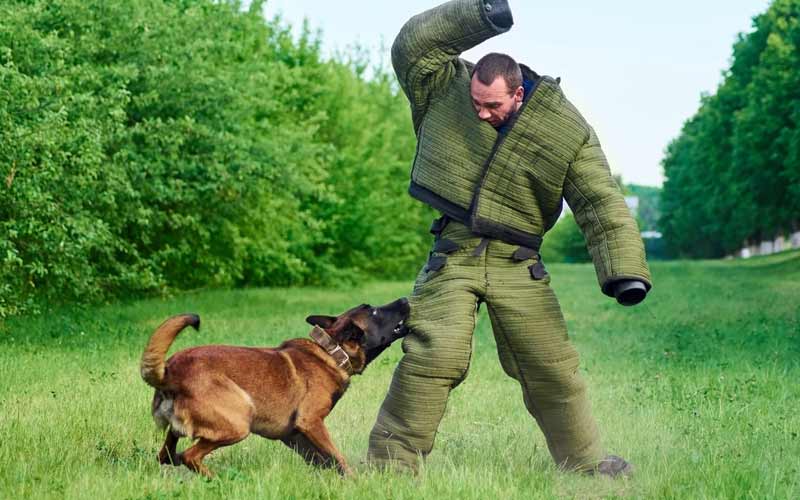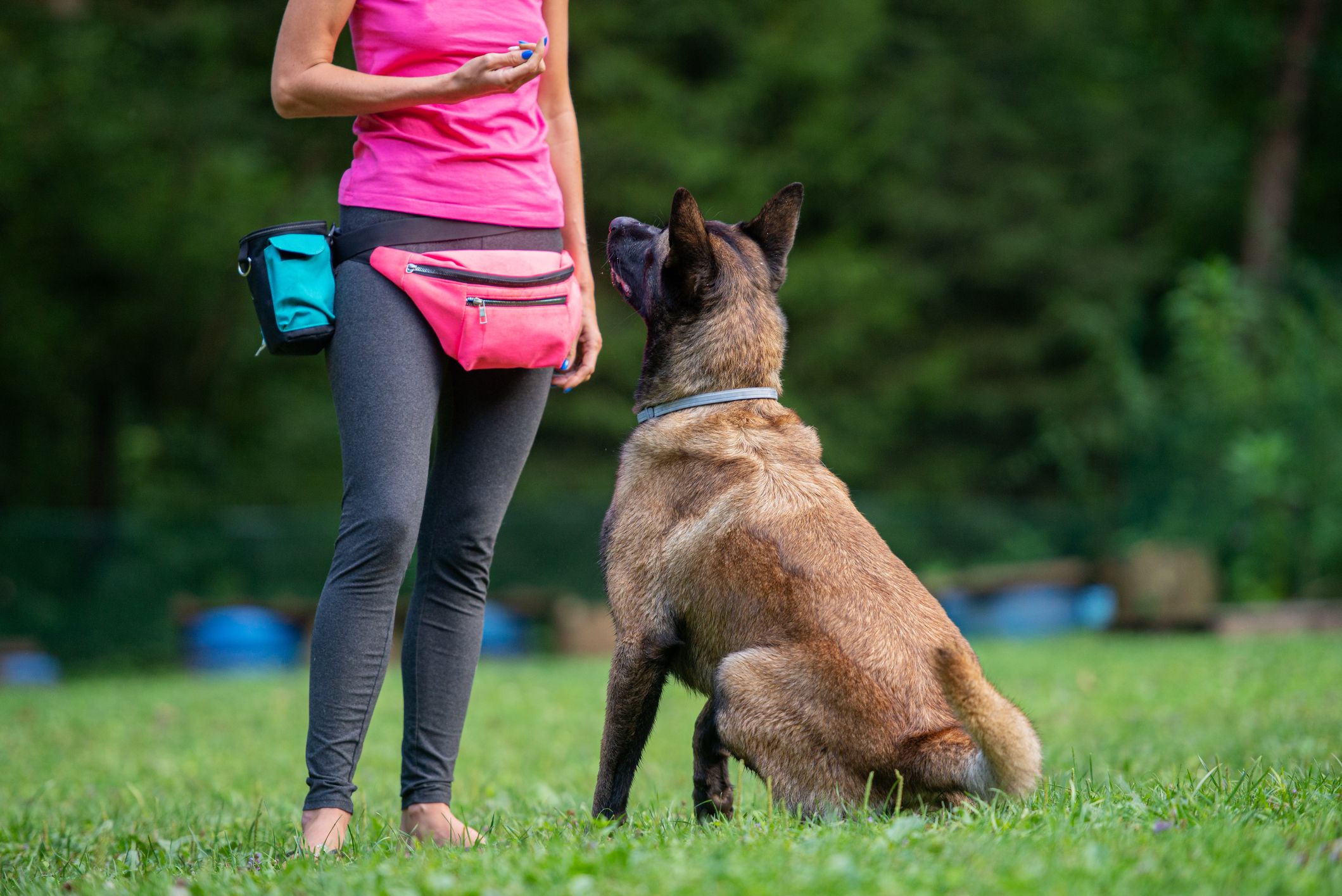Essential Techniques for Reliable Dog Training You Need to Know
Wiki Article
Necessary Tips for Successful Dog Training: An Overview for Pet Dog Owners
Effective dog training is a diverse procedure that needs a critical technique customized to both the pet dog's character and the owner's goals. Recognizing how to browse these barriers can considerably improve the training experience, inevitably changing the connection between owner and canine.Recognizing Canine Habits
Recognizing pet behavior is essential for reliable training and fostering a harmonious connection between dogs and their owners. Canines communicate mostly through body language, articulations, and activities, making it critical for owners to analyze these signals precisely. Identifying a pet dog's posture, tail position, and ear positioning can supply insights right into its psychological state. For example, a wagging tail does not always suggest happiness; it can likewise signify excitement or anxiousness.
Socializing plays a significant duty in pet dog habits; direct exposure to numerous environments, people, and various other animals can dramatically affect a pet's temperament. Factors such as type qualities and specific temperament need to guide training techniques, as some types might have certain behavior attributes that necessitate tailored methods. By understanding these elements, proprietors can produce a helpful atmosphere that urges positive habits, bring about effective training results and a much deeper bond with their pets.
Developing Constant Commands
Effective communication with your dog starts with developing constant commands. This foundational aspect of training is crucial for cultivating understanding in between you and your family pet. Consistency in the commands you use makes sure that your pet dog can accurately link specific words or phrases with the wanted behaviors.When choosing commands, select clear, distinct words that are simple to distinguish and claim from one another. Prevent making use of similar-sounding commands that may puzzle your dog. For instance, making use of "sit" and "remain" is ideal, but "sit" and "hit" might bring about misconceptions.
In addition, preserve the exact same tone and quantity for every command. Pet dogs are sensitive to vocal hints, so varying your tone can create confusion.
It is equally essential to make sure that all relative are on the very same page relating to the commands utilized. A united front in command usage will protect against blended signals and reinforce the learning process.
Positive Support Strategies
The power of favorable reinforcement in canine training exists in its ability to motivate desired habits through benefits and appreciation. This method is based in the concept that actions followed by beneficial end results are extra most likely to be repeated. By including positive support right into your training routine, you can successfully shape your pet dog's behavior in a positive manner.To carry out favorable support, it's important to identify what inspires your pet, whether it be deals with, playthings, or verbal appreciation. When your pet dog does a wanted action, such as resting on command, right away reward them with a treat or affection. This association between the command and the positive outcome strengthens their understanding.
It's important to timing the rewards appropriately; providing see post the support within seconds of the desired behavior aids your canine make the connection (dog training). Furthermore, consistency is key-- guarantee that all relative utilize the exact same commands and benefit systems to prevent confusion

Gradually, you my website can reduce the regularity of deals with as your canine discovers the behavior, transitioning to applaud or recurring benefits. This approach not just fosters a solid bond between you and your pet however additionally promotes a favorable understanding atmosphere, making educating a pleasurable experience for both.
Socialization and Interaction
Constantly revealing your pet dog to a variety of settings, individuals, and various other pets is vital for their social development. Socialization should begin early, ideally during the critical home window of 3 to 14 weeks, when pups are most responsive to brand-new experiences. Nevertheless, older dogs can additionally gain from recurring socializing efforts.Introduce your canine to different settings, such as parks, pet-friendly shops, and urban locations. This exposure aids them adapt to various stimulations, lowering stress and anxiety and anxiety actions. Encourage positive interactions with various other canines and people, guaranteeing that these encounters are secure and regulated to foster self-confidence.
Make use of structured playdates with well-mannered dogs, as this can enhance your pet dog's social abilities and show them appropriate actions. Obedience courses and training sessions likewise offer superb chances for socialization, enabling your pet to engage with others in a supervised atmosphere.
Monitor your pet's body movement throughout interactions, as this will help you assess their convenience degree. Slowly enhance direct exposure to even more challenging scenarios while making sure that each experience declares. A well-socialized dog is extra most likely to show well balanced actions, making them a happiness to have in any kind see this here of setup.
Addressing Usual Training Challenges
Every pet proprietor will experience training obstacles at some point, no matter of their canine's age or socialization degree. Determining usual issues such as stubbornness, distractions, and fearfulness can assist in developing reliable methods for renovation.
Progressively present disturbances as the canine ends up being much more efficient in commands. Short, constant training sessions are also reliable in keeping interest.
Fearfulness can prevent a dog's learning procedure. Steady desensitization to the source of fear, coupled with favorable reinforcement, can help minimize anxiousness. Perseverance is important; never require a canine right into a situation that creates distress, as this might aggravate the problem.
Ultimately, understanding and attending to these usual challenges with an organized approach will certainly promote a much more productive training experience, strengthening the bond in between pet dog and owner while advertising reliable learning.
Final Thought
In summary, successful pet training relies upon a thorough understanding of canine habits, the establishment of consistent commands, and the application of positive reinforcement methods. Socializing plays an essential duty in developing well-adjusted pets, while addressing common training difficulties calls for perseverance and flexibility. By applying these essential methods, family pet proprietors can cultivate a strong bond with their canines and promote preferable actions, eventually leading to a harmonious partnership in between humans and their canine companions.Understanding pet dog habits is vital for effective training and cultivating a harmonious relationship between dogs and their owners.Socialization plays a considerable duty in dog actions; exposure to different environments, individuals, and various other pets can considerably influence a canine's personality.The power of positive reinforcement in canine training lies in its capacity to encourage wanted behaviors through benefits and praise. By integrating positive reinforcement into your training regimen, you can properly shape your dog's habits in a positive way.
In summary, successful pet dog training depends on a thorough understanding of canine actions, the establishment of regular commands, and the application of favorable reinforcement strategies.
Report this wiki page